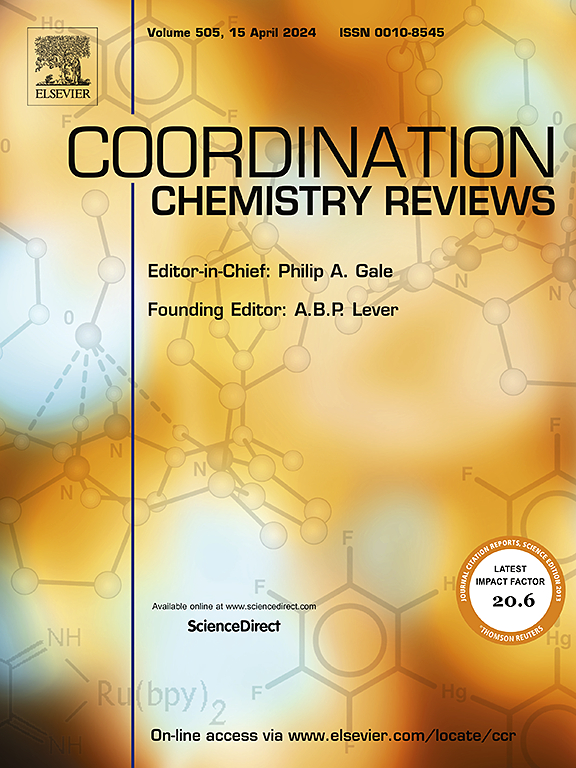微流化学中异质催化剂的固定化策略:高效和可持续化学转化的关键技术
IF 20.3
1区 化学
Q1 CHEMISTRY, INORGANIC & NUCLEAR
引用次数: 0
摘要
在催化领域,多相催化剂被广泛使用,其中催化剂固定化技术在决定其性能和反应效率方面起着关键作用。包括原位生长、杂交和化学接枝在内的多种固定化方法不仅是可行的,而且对于增加活性位点的数量和分散,从而提高催化效率是必不可少的。然而,这些技术的实际实施经常遇到诸如反应性降低、稳定性不足和保持均匀性困难等挑战。连续流多相催化是多相催化体系的一个重要分支,由于其安全性高、成本效益好、效率高,在精细化学品的合成中得到了突出的应用。本文系统总结了目前流动反应器中多相催化剂的设计策略,重点介绍了各种固定化技术的优缺点。具体而言,我们重点关注这些技术在微流控通道中的成功应用,以提高催化活性和选择性,实现反应条件的精确控制,提高催化剂的稳定性和可回收性。本文综述的目的是为了使读者对微流控通道中催化剂非均相方法有更深入的了解,并促进更先进的工业应用非均相催化剂的合理设计研究。本文章由计算机程序翻译,如有差异,请以英文原文为准。
Immobilization strategies for heterogeneous catalysts in micro flow chemistry: Key techniques for efficient and sustainable chemical transformations
In the domain of catalysis, heterogeneous catalysts are predominantly utilized, with catalyst immobilization techniques playing a pivotal role in determining performance and reaction efficiency. A variety of immobilization methods, including in situ growth, hybridization, and chemical grafting, are not only available but also essential for enhancing the number and dispersion of active sites, thereby elevating catalytic efficiency. However, the practical implementation of these techniques often encounters challenges such as reduced reactivity, insufficient stability, and difficulties in maintaining uniformity. Continuous flow heterogeneous catalysis, a significant subset of heterogeneous catalytic systems, has gained prominence in the synthesis of fine chemicals due to its high safety, cost-effectiveness, and efficiency. This review systematically summarizes the current design strategies for heterogeneous catalysts in flow reactors, highlighting the advantages and disadvantages of various immobilization techniques. Specifically, we focus on the successful application of these technologies in microfluidic channels to enhance catalytic activity and selectivity, achieve precise control of reaction conditions, and improve catalyst stability and recyclability. The aim of this review is to provide readers with a deeper understanding of catalyst heterogeneity approaches in microfluidic channels and to facilitate research on the rational design of more advanced heterogeneous catalysts for industrial applications.
求助全文
通过发布文献求助,成功后即可免费获取论文全文。
去求助
来源期刊

Coordination Chemistry Reviews
化学-无机化学与核化学
CiteScore
34.30
自引率
5.30%
发文量
457
审稿时长
54 days
期刊介绍:
Coordination Chemistry Reviews offers rapid publication of review articles on current and significant topics in coordination chemistry, encompassing organometallic, supramolecular, theoretical, and bioinorganic chemistry. It also covers catalysis, materials chemistry, and metal-organic frameworks from a coordination chemistry perspective. Reviews summarize recent developments or discuss specific techniques, welcoming contributions from both established and emerging researchers.
The journal releases special issues on timely subjects, including those featuring contributions from specific regions or conferences. Occasional full-length book articles are also featured. Additionally, special volumes cover annual reviews of main group chemistry, transition metal group chemistry, and organometallic chemistry. These comprehensive reviews are vital resources for those engaged in coordination chemistry, further establishing Coordination Chemistry Reviews as a hub for insightful surveys in inorganic and physical inorganic chemistry.
 求助内容:
求助内容: 应助结果提醒方式:
应助结果提醒方式:


